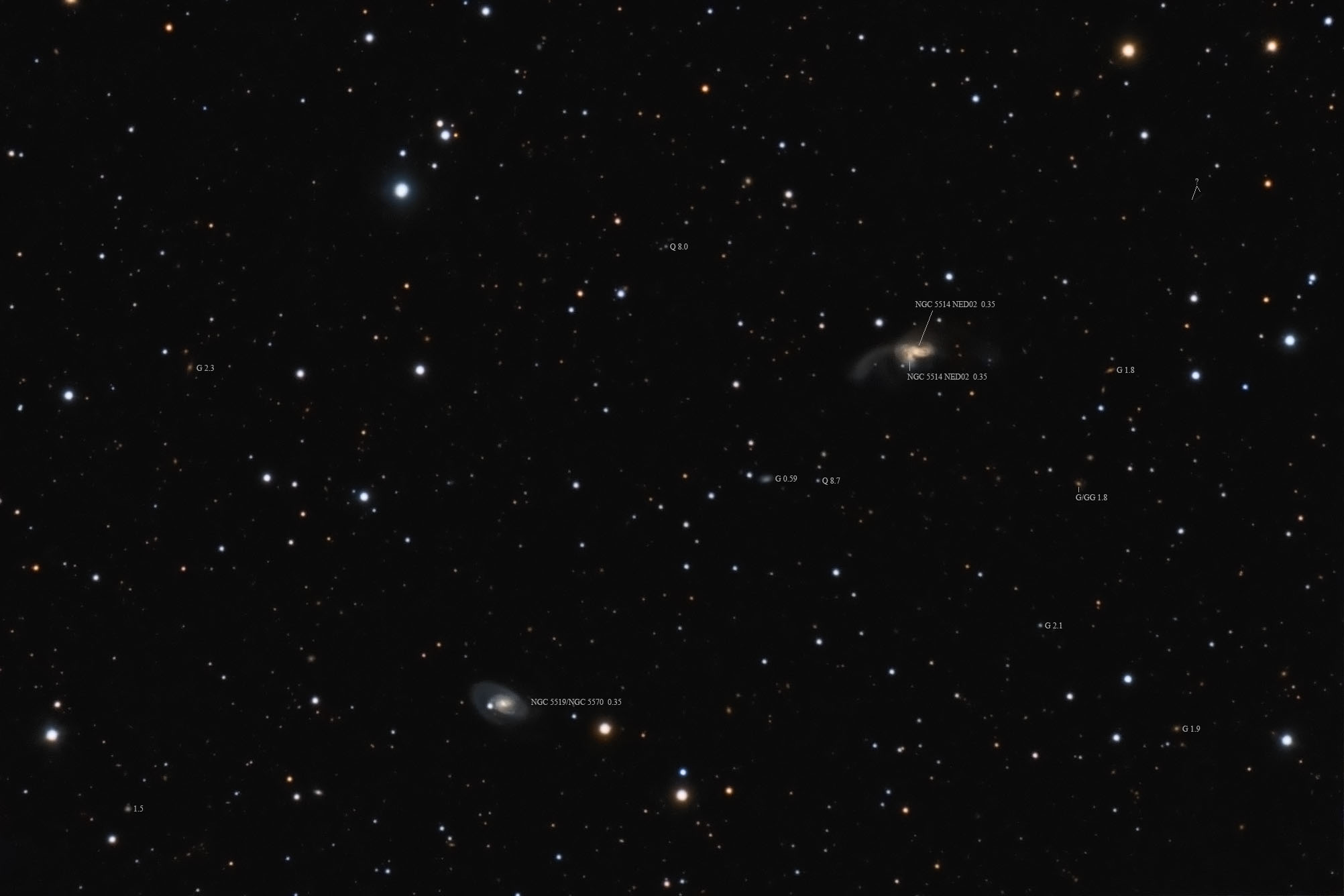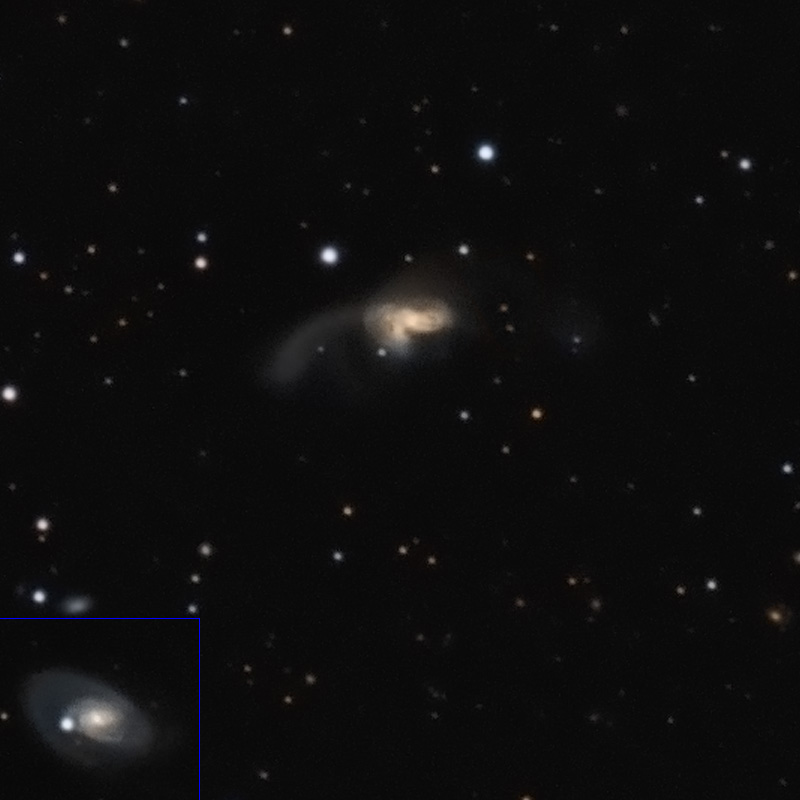| Description | Images |
Object name: NGC5514Designation(s): NGC5514, NGC 5514 is a colliding pair of galaxies in Bo÷tes about 350 million light-years away. NED classes NED01 as Sa and NED02 as Sb. The NGC project only classifies the combination which it sees as Sab. I classify them as a mess. NED shows a distance of 330 million light-years for the combined entry for NGC 5519 but 350 million light-years for the individual galaxies that make it up. I've seen this type of discrepancy before. If anyone knows why please let me know and I'll pass it on. NGC 5514 would seem to find any of several of Arp's categories for plumed galaxies or even that of a spiral galaxy with a high surface brightness companion on an arm. Lots of possibilities here but Arp didn't include it yet included several lesser examples for some reason. I didn't realize the western plume existed when I planned for this image. It wasn't until I went to process it a year later than I realized it was there. I needed a lot more exposure time to pick it up very well. This will have to do for now. It was discovered by Heinrich d'Arrest on April 26, 1865. Related Designation(s):87GB 141110.1+075327, 87GB[BWE91] 1411+0753, CGCG 046-066, CGCG 1411.2+0754, GALEXASC J141338.90+073934.8 , IRAS 14111+0753, IRAS F14111+0753, KPG 420, LQAC 213+007 010, MCG +01-36-023, NGC 5514, NGC5514, NSA 144710, NVSS J141338+073934, PGC 050809, PMN J1413+0739, TXS 1411+078, UGC 09102, VLSS J1413.6+0739, VV 070, [dML87] 342, [M98j] 223 NED01, [VCV2006] J141338.9+073933, [VFK2015] J213.41263+07.65946 , [WB92] 1411+0753, |


